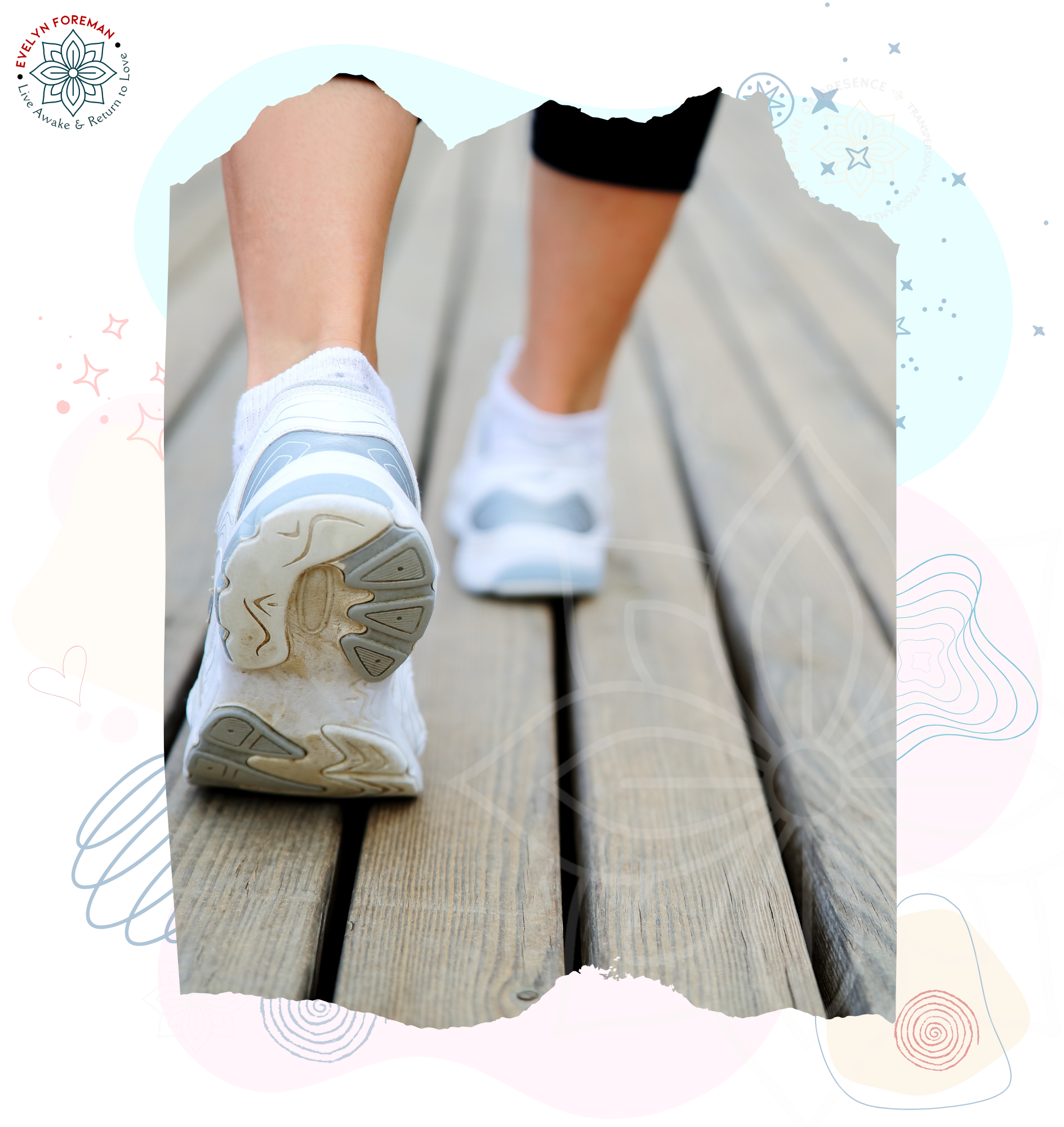Explore Evelyn’s Blog for Insightful Life Guidance
Explore Evelyn Foreman’s Blog for Inspiration

Walking Meditation: A Path to Connecting with Your Inner Self for Enhanced Focus and Goal Achievement
"Walk as if you are kissing the Earth with your feet." - Thich Nhat Hanh
Introduction
In our fast-paced world, finding time and methods to regain focus and work towards our goals can be challenging. Walking meditation emerges as a compelling practice, combining the physical benefits of walking with the mental clarity brought by meditation. Unlike traditional seated meditation, walking meditation involves movement, which can be particularly beneficial for those who find stillness difficult. This practice not only helps reduce stress but also enhances concentration, making it a vital tool for anyone looking to improve their focus and achieve their goals. This article will explore the benefits of walking meditation for focus, provide a step-by-step guide to starting, and discuss how integrating it into your daily routine can lead to significant personal and professional growth.

Understanding Walking Meditation
Walking meditation is a form of meditation in action. In this practice, each step is taken with mindfulness, connecting the practitioner fully with the present moment. Originating from Buddhist traditions, this practice has been a foundational method for developing calm, connectedness, and embodied awareness. Unlike static meditation practices, walking meditation involves dynamic movement, making it an ideal practice for those who prefer to stay active.
The process focuses on the sensation of walking, noticing the subtle movements of the legs and feet, and being fully aware of the body’s interaction with its surroundings. This focus on physical sensations makes walking meditation particularly effective at enhancing mental clarity and reducing the 'noise' of a busy mind.
How Walking Meditation Enhances Focus
The primary benefit of walking meditation is its ability to clear the mind and increase alertness and concentration. When practiced regularly, it can significantly sharpen one’s focus, benefiting both personal and professional aspects of life. By grounding thoughts in the physical activity of walking, the mind becomes less prone to distraction. This heightened focus can lead to better decision-making, increased productivity, and an enhanced ability to meet and set goals.
Neuroscientific research supports the benefits of walking meditation, showing that such mindfulness practices can alter brain regions linked with memory, self-awareness, and empathy. The repetitive action of stepping can help achieve a meditative state, which clears the mind and leads to enhanced problem-solving abilities.

Walking Meditation and Goal Setting
Integrating walking meditation into your goal-setting process can be transformative. It provides a unique opportunity to reflect on personal ambitions and challenges while engaging in a physical activity that promotes mental clarity. During a walking meditation session, you can focus on specific goals you wish to achieve, using the calm and clarity brought by meditation to carefully consider the steps needed to reach these goals.
This meditative practice also fosters greater alignment between one’s thoughts and actions, aiding in the formulation of clear, achievable goals. By regularly setting aside time for walking meditation, you can maintain a focused direction in your personal and professional life, ensuring that your actions are consistently driven towards your goals.

Step-by-Step Guide to Starting Walking Meditation
Starting walking meditation is simple and can be adapted to fit any lifestyle or schedule. Here’s how you can begin:
1. Find a Quiet Place:
Ideally, choose a peaceful area where you can walk without much distraction. This could be a park, a garden, or even a quiet pathway.
2. Set a Time Limit:
Begin with just 10 minutes a day, gradually increasing the time as you become more comfortable with the practice.
3. Focus on Your Body:
Pay attention to the sensation of your feet touching the ground, the rhythm of your walk, and the movement of your legs. If your mind wanders, gently bring your focus back to these sensations.
4. Maintain a Slow Pace:
The goal is not to reach a destination but to be present with each step. Maintain a pace that allows you to concentrate on the experience of walking.
5. Use Breathing as a Focal Point:
Sync your breathing with your steps. For example, breathe in for three steps and breathe out for three steps.
Integrating Walking Meditation into Your Daily Routine
Incorporating walking meditation into your daily routine can help ensure that you consistently practice it, reaping ongoing benefits. You might schedule your walking meditation during lunch breaks, after morning chores, or in the evening as a way to decompress after a long day. Regularity is key to forming a habit and experiencing the long-term benefits of this practice.
Conclusion
Walking meditation is a simple yet powerful tool for enhancing focus and achieving personal and professional goals. By integrating walking meditation into your daily life, you can enjoy the dual benefits of increased physical activity and greater mental clarity. This practice not only helps achieve a serene mind but also empowers you to live more thoughtfully and purposefully. Whether you are a busy professional or someone seeking personal growth, walking meditation offers a practical pathway to enhancing your focus and reconnecting with your inner self. Start today, and experience the profound impact it can have on your life and aspirations.
Have you tried walking meditation? How has it impacted your focus and goal achievement? Share your experiences in the comments below or reach out on our social media platforms.
We love hearing from you and learning about how these practices are making a difference in your life. If you found this guide helpful, consider subscribing to our newsletter for more tips and updates on enhancing mindfulness and productivity in your daily routine.

FREE DOWNLOAD
The Awakened Soul's Inner Dialogue Guide
A 3 Day Guide to Reset & Restart: Unlocking the Power of Positive Inner Dialogue
© Copyright 2024 Evelyn Foreman - Privacy Policy - Terms & Conditions - Disclaimer

